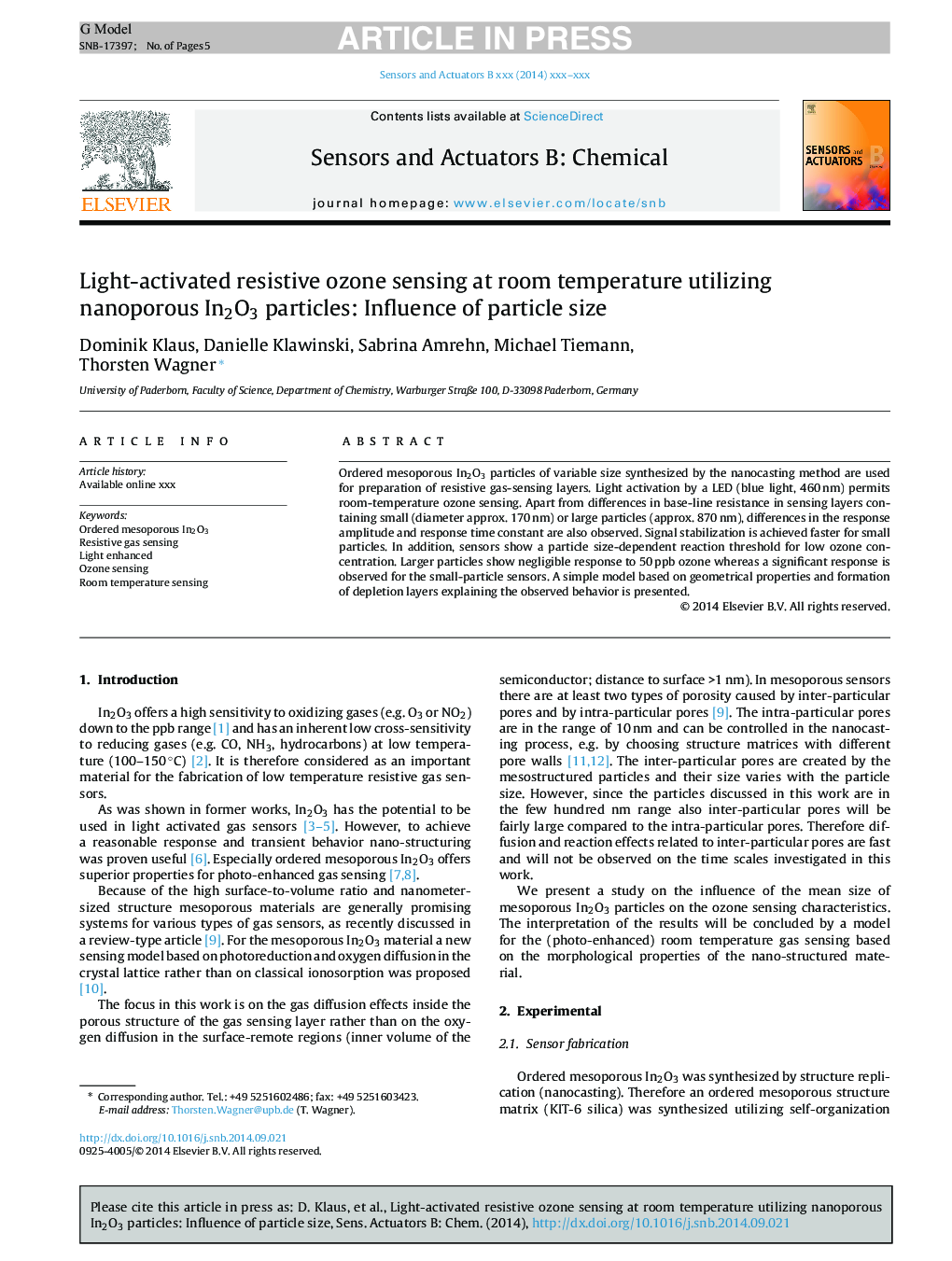| Article ID | Journal | Published Year | Pages | File Type |
|---|---|---|---|---|
| 7145732 | Sensors and Actuators B: Chemical | 2015 | 5 Pages |
Abstract
Ordered mesoporous In2O3 particles of variable size synthesized by the nanocasting method are used for preparation of resistive gas-sensing layers. Light activation by a LED (blue light, 460Â nm) permits room-temperature ozone sensing. Apart from differences in base-line resistance in sensing layers containing small (diameter approx. 170Â nm) or large particles (approx. 870Â nm), differences in the response amplitude and response time constant are also observed. Signal stabilization is achieved faster for small particles. In addition, sensors show a particle size-dependent reaction threshold for low ozone concentration. Larger particles show negligible response to 50Â ppb ozone whereas a significant response is observed for the small-particle sensors. A simple model based on geometrical properties and formation of depletion layers explaining the observed behavior is presented.
Related Topics
Physical Sciences and Engineering
Chemistry
Analytical Chemistry
Authors
Dominik Klaus, Danielle Klawinski, Sabrina Amrehn, Michael Tiemann, Thorsten Wagner,
